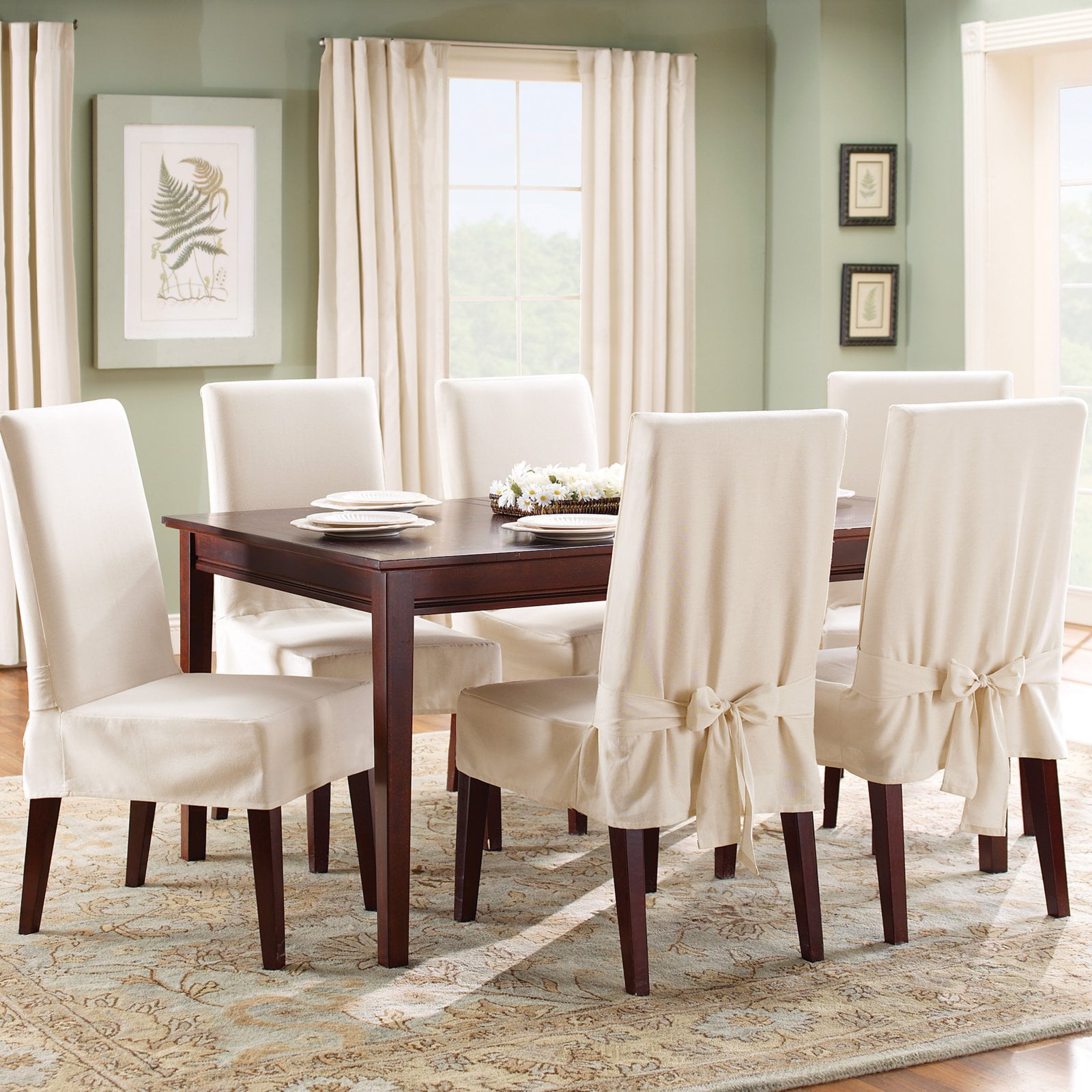Choosing the Right Fabric Based on Dining Room Style: Fabric For Dining Room Chair Covers

Selecting the appropriate fabric for dining chair covers significantly impacts the overall aesthetic and functionality of your dining room. The durability, texture, and style of the fabric should complement the existing décor and create a cohesive design. Careful consideration of these factors ensures both visual appeal and practicality.
Fabric Selection for Different Dining Room Styles
The choice of fabric should harmoniously blend with the prevailing style of your dining room. Different fabrics evoke distinct moods and aesthetics, influencing the overall atmosphere of the space. A mismatch can disrupt the visual balance, while a well-chosen fabric enhances the room’s character.
- Modern Dining Room: Modern styles often prioritize clean lines, minimalist designs, and neutral color palettes. Suitable fabrics include linen in solid colors or subtle geometric patterns, microfiber for its easy maintenance, and leather or faux leather for a sleek, sophisticated look. Avoid overly ornate patterns or textures.
- Traditional Dining Room: Traditional dining rooms often feature ornate details, rich colors, and luxurious textures. Velvet, damask, and brocade are excellent choices, offering a sense of elegance and sophistication. Floral patterns, intricate damask weaves, and rich jewel tones are appropriate for this style. Consider heavier weight fabrics for a more formal look.
- Rustic Dining Room: Rustic styles embrace natural materials and textures, often featuring warm earth tones and a sense of casual comfort. Burlap, canvas, and cotton are ideal choices, offering a relaxed and inviting feel. Simple patterns like stripes or plaids, or even solid colors in natural shades, will complement this style. The texture of the fabric should contribute to the overall rustic feel.
- Farmhouse Dining Room: Farmhouse style blends rustic charm with a touch of modern practicality. Gingham, ticking stripe, and floral patterns in muted colors are perfect choices. Linen, cotton, and even denim can create a comfortable and inviting atmosphere. Choose fabrics with a slightly worn or distressed look to enhance the overall aesthetic.
Color and Pattern Selection for Dining Room Ambiance
Color psychology plays a significant role in shaping the mood and atmosphere of a dining room. Color choices influence appetite, conversation, and the overall feeling of the space. Pattern selection adds another layer of visual interest and can contribute to the room’s personality.
- Warm Colors (reds, oranges, yellows): These colors stimulate appetite and create a lively, energetic atmosphere, ideal for social gatherings. However, overuse can feel overwhelming.
- Cool Colors (blues, greens, purples): These colors are calming and relaxing, creating a more tranquil dining experience. They can be particularly effective in smaller spaces.
- Neutral Colors (whites, creams, grays, beiges): These colors provide a versatile backdrop, allowing other elements in the room to stand out. They create a sense of spaciousness and elegance.
- Patterns: Small-scale patterns create a subtle visual interest, while large-scale patterns can make a bold statement. Geometric patterns offer a modern touch, while floral patterns evoke a more traditional feel. Consider the scale of the pattern in relation to the size of the dining room and the furniture.
Incorporating Fabric Texture and Patterns for Visual Interest, Fabric for dining room chair covers
Strategic use of fabric texture and patterns adds depth and visual interest to the dining room setting. Layering different textures and contrasting patterns can create a dynamic and engaging space.
Fabric for dining room chair covers – Layering techniques can involve using different fabrics for chair covers, tablecloths, and placemats. For example, a linen tablecloth paired with velvet chair covers creates a pleasing contrast in texture and visual weight. Combining a patterned tablecloth with solid-colored chair covers can also be effective. Contrasting textures, such as the smoothness of satin against the roughness of burlap, can add visual complexity and depth.
Pattern mixing can also enhance visual interest. However, it requires careful consideration to avoid a chaotic look. For example, combining a subtle floral pattern with a geometric pattern in coordinating colors can create a sophisticated and layered effect. The key is to maintain a balance between the patterns and ensure that they complement each other.
